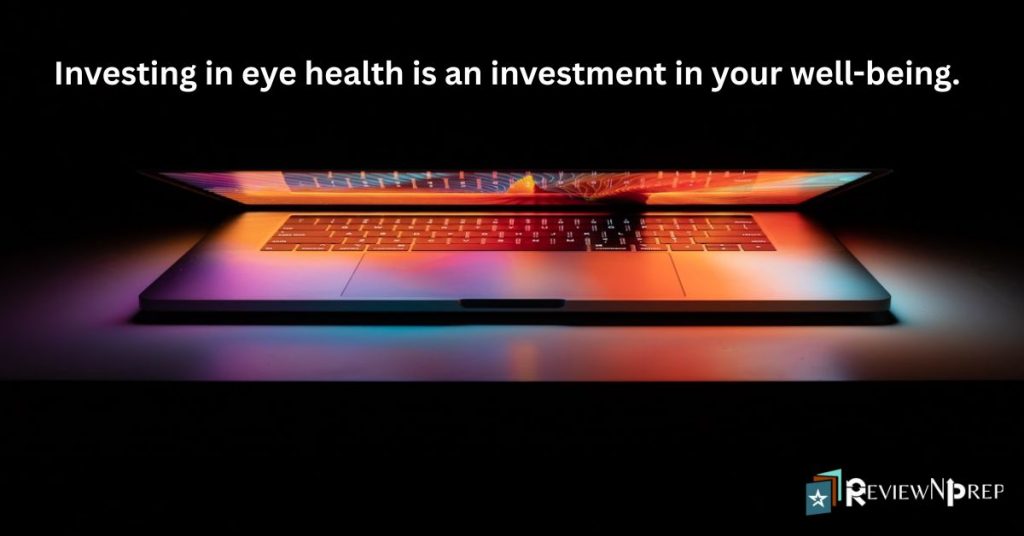It’s common for people to spend most of their waking hours staring at screens, whether it’s for work, school, or entertainment. While this might seem like an unavoidable part of modern life, it comes with consequences that are often underestimated. One of the most widespread yet overlooked issues is digital eye strain, known as computer vision syndrome.
Blurred vision, headaches, dry eyes, and difficulty concentrating are just a few signs that your eyes are being overworked. These symptoms often creep up gradually, and many people don’t realize the toll screens are taking on their eye health until discomfort becomes chronic.
Understanding the Impact of Blue Light and Screen Time
Prolonged exposure to digital screens forces your eyes to work harder than they were designed to. Unlike printed text, screens emit blue light and lack the natural contrast your eyes prefer. This makes focusing more difficult and contributes to a range of issues, from squinting to ocular muscle fatigue.
Consider Block Blue Light and similar brands of glasses that filter out high-energy visible (HEV) blue light to reduce eye strain and protect against long-term damage. These lenses can be particularly helpful during nighttime use, when blue light exposure can interfere with melatonin production and disrupt sleep cycles.
While blue light isn’t inherently harmful in moderation, consistent overexposure can lead to oxidative stress in the retina. By mitigating blue light and improving screen ergonomics, you give your eyes a chance to recover and function more efficiently throughout the day.
Recognizing the Signs of Digital Eye Strain
Many people push through the symptoms of eye strain, assuming the discomfort is just a part of a screen-heavy life. But ignoring the signs can lead to worsening problems if your job or lifestyle requires regular screen use.
Common symptoms of digital eye strain include:
- Dry, irritated, or burning eyes
- Blurred or double vision
- Frequent headaches or tension around the eyes
- Increased light sensitivity
- Neck and shoulder pain caused by poor posture while straining to see clearly
The longer these symptoms are left unaddressed, the more likely they are to interfere with productivity and focus. If you find yourself blinking less, rubbing your eyes frequently, or struggling to concentrate by late afternoon, your screen habits may be the cause.
How Poor Ergonomics Make It Worse
It’s not just the screen that causes fatigue; it’s how you interact with it. Improper screen positioning, poor lighting, and extended sessions without breaks all contribute to discomfort. Ideally, your monitor should be positioned about 20 to 28 inches from your eyes, with the top of the screen at or just below eye level.
Lighting plays a major role. Bright overhead lighting or glare from nearby windows can increase the visual load on your eyes. Use adjustable lamps, position your screen away from windows, and consider anti-glare filters to create a more eye-friendly environment.
Posture matters too. Leaning forward or craning your neck to view the screen increases tension in the upper back and neck, which can amplify headache frequency. A well-aligned chair, desk, and monitor setup is crucial for full-body comfort, not just eye health.
Simple Daily Habits That Can Help
Incorporating small, intentional habits into your daily routine can significantly reduce eye fatigue and improve your comfort. One of the most effective techniques is the 20-20-20 rule: every 20 minutes, look at something 20 feet away for 20 seconds. This gives your eye muscles a chance to relax and reset.
Blinking more frequently helps prevent dryness and maintains a healthy tear film. Drinking enough water supports eye moisture and general health. Scheduling five- to ten-minute screen-free breaks every hour can help recharge your focus and reduce muscle stiffness.
Some people benefit from using artificial tears or lubricating eye drops in dry indoor environments where air conditioning or heating reduces humidity.
The Long-Term Risks of Ignoring Eye Strain
Chronic eye strain is not just uncomfortable, it can lead to lasting consequences. While it won’t cause permanent vision loss on its own, it can exacerbate existing conditions like myopia (nearsightedness) or presbyopia (age-related farsightedness) if preventative steps aren’t taken.
Poor visual habits can lead to a reliance on glasses for reading or distance vision, and ongoing strain can trigger tension headaches that interfere with daily life. Blue light exposure at night may disrupt circadian rhythms, leading to poor sleep quality, which in turn affects mood, energy, and cognitive function.
Investing in eye health is an investment in your well-being. The earlier you recognize and address screen-related fatigue, the better chance you have of preserving comfortable, healthy vision into the future.

Long hours at the computer are a reality for many, but eye strain and fatigue don’t have to be. With the right tools, habits, and workspace adjustments, you can significantly reduce discomfort and protect your vision. Treat your eye health as seriously as your posture or physical fitness, because in a world run by screens, your eyes deserve just as much care.
Further Reading:
Boosting Efficiency: Unveiling the Secrets of Developer Productivity
The Future of Remote Work: Strategies for Long-Term Career Success

